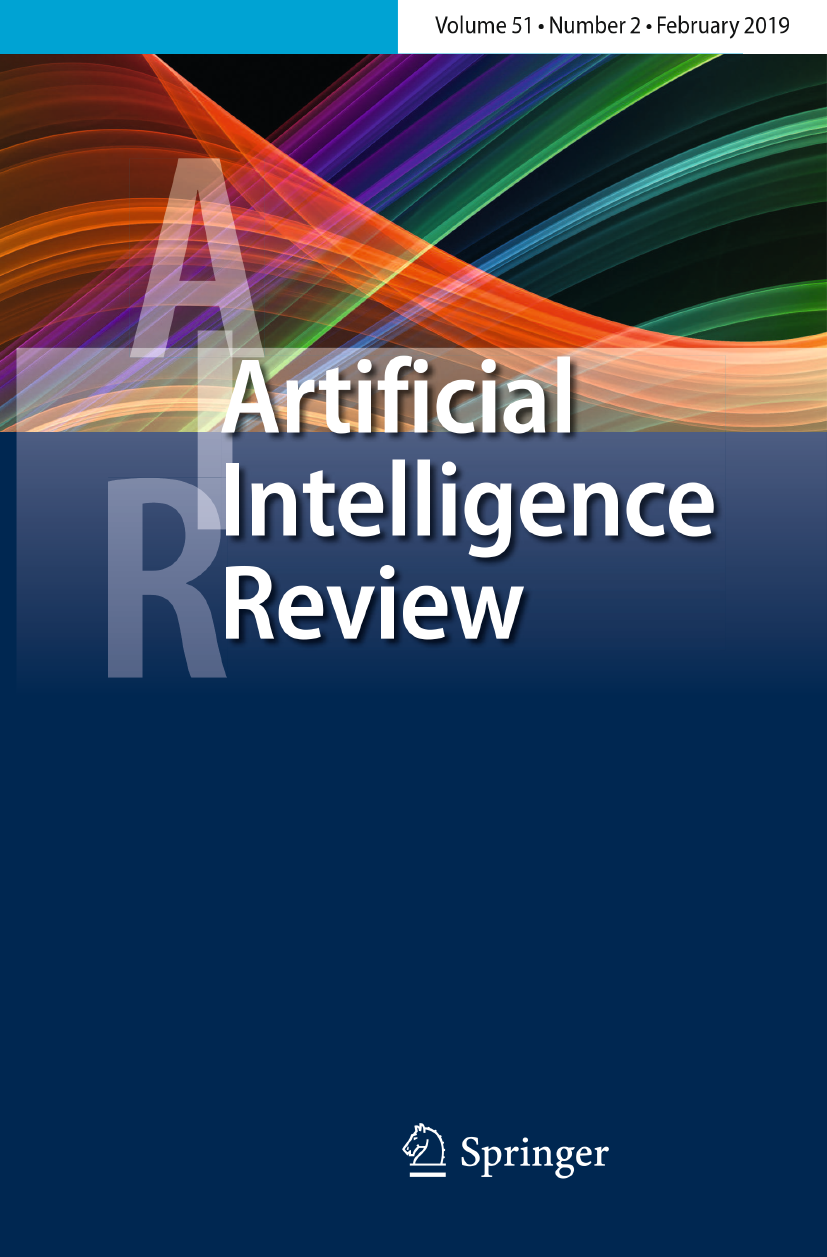link.springer.com/article/10.1007/s10462-005-9011-9
Preview meta tags from the link.springer.com website.
Linked Hostnames
21- 29 links tolink.springer.com
- 19 links toscholar.google.com
- 17 links towww.ncbi.nlm.nih.gov
- 12 links todoi.org
- 10 links towww.springernature.com
- 4 links toscholar.google.co.uk
- 2 links tocitation-needed.springer.com
- 2 links tosupport.springernature.com
Thumbnail

Search Engine Appearance
https://link.springer.com/article/10.1007/s10462-005-9011-9
Self-Organizing Maps of Position Weight Matrices for Motif Discovery in Biological Sequences - Artificial Intelligence Review
The identification of overrepresented motifs in a collection of biological sequences continues to be a relevant and challenging problem in computational bi
Bing
Self-Organizing Maps of Position Weight Matrices for Motif Discovery in Biological Sequences - Artificial Intelligence Review
https://link.springer.com/article/10.1007/s10462-005-9011-9
The identification of overrepresented motifs in a collection of biological sequences continues to be a relevant and challenging problem in computational bi
DuckDuckGo
Self-Organizing Maps of Position Weight Matrices for Motif Discovery in Biological Sequences - Artificial Intelligence Review
The identification of overrepresented motifs in a collection of biological sequences continues to be a relevant and challenging problem in computational bi
General Meta Tags
92- titleSelf-Organizing Maps of Position Weight Matrices for Motif Discovery in Biological Sequences | Artificial Intelligence Review
- charsetUTF-8
- X-UA-CompatibleIE=edge
- applicable-devicepc,mobile
- viewportwidth=device-width, initial-scale=1
Open Graph Meta Tags
6- og:urlhttps://link.springer.com/article/10.1007/s10462-005-9011-9
- og:typearticle
- og:site_nameSpringerLink
- og:titleSelf-Organizing Maps of Position Weight Matrices for Motif Discovery in Biological Sequences - Artificial Intelligence Review
- og:descriptionThe identification of overrepresented motifs in a collection of biological sequences continues to be a relevant and challenging problem in computational biology. Currently popular methods of motif discovery are based on statistical learning theory. In this paper, a machine-learning approach to the motif discovery problem is explored. The approach is based on a Self-Organizing Map (SOM) where the output layer neuron weight vectors are replaced by position weight matrices. This approach can be used to characterise features present in a set of sequences, and thus can be used as an aid in overrepresented motif discovery. The SOM approach to motif discovery is demonstrated using biological sequence datasets, both real and simulated
Twitter Meta Tags
6- twitter:site@SpringerLink
- twitter:cardsummary_large_image
- twitter:image:altContent cover image
- twitter:titleSelf-Organizing Maps of Position Weight Matrices for Motif Discovery in Biological Sequences
- twitter:descriptionArtificial Intelligence Review - The identification of overrepresented motifs in a collection of biological sequences continues to be a relevant and challenging problem in computational biology....
Item Prop Meta Tags
3- position1
- position2
- position3
Link Tags
9- apple-touch-icon/oscar-static/img/favicons/darwin/apple-touch-icon-6ef0829b9c.png
- canonicalhttps://link.springer.com/article/10.1007/s10462-005-9011-9
- icon/oscar-static/img/favicons/darwin/android-chrome-192x192.png
- icon/oscar-static/img/favicons/darwin/favicon-32x32.png
- icon/oscar-static/img/favicons/darwin/favicon-16x16.png
Emails
1Links
109- http://scholar.google.com/scholar_lookup?&title=&journal=Discovery%20of%20Conserved%20Sequence%20Patterns%20Using%20a%20Stochastic%20Dictionary%20Model.%20Journal%20of%20the%20American%20Statistical%20Association&volume=98&pages=55-66&publication_year=2003&author=Gupta%2CM.&author=Liu%2CJ.S.
- http://scholar.google.com/scholar_lookup?&title=An%20Expectation%20Maximization%20%28EM%29%20Algorithm%20for%20the%20Identification%20and%20Characterization%20of%20Common%20Sites%20in%20Unaligned%20Biopolymer%20Sequences&journal=Proteins&doi=10.1002%2Fprot.340070105&volume=7&pages=41-51&publication_year=1990&author=Lawrence%2CC.E.&author=Reilly%2CA.A.
- http://scholar.google.com/scholar_lookup?&title=Analysis%20of%20Codon%20Usage%20Diversity%20of%20Bacterial%20Genes%20with%20a%20Self-organizing%20Map%20%28SOM%29%3A%20Characterization%20of%20Horizontally%20Transferred%20Genes%20with%20Emphasis%20on%20the%20E.%20coli%20O157%20Genome&journal=Gene&doi=10.1016%2FS0378-1119%2801%2900673-4&volume=276&pages=89-99&publication_year=2001&author=Kanaya%2CS.&author=Kinouchi%2CM.&author=Abe%2CT.&author=Kudo%2CY.&author=Yamada%2CY.&author=Nishi%2CT.&author=Mori%2CH.&author=Ikemura%2CT.
- http://scholar.google.com/scholar_lookup?&title=Analysis%20of%20Codon%20Usage%20Patterns%20of%20Bacterial%20Genomes%20Using%20the%20Self-organizing%20Map&journal=Molecular%20Biology%20and%20Evolution&volume=18&pages=792-800&publication_year=2001&author=Wang%2CH.C.&author=Badger%2CJ.&author=Kearney%2CP.&author=Li%2CM.
- http://scholar.google.com/scholar_lookup?&title=BioProspector%3A%20Discovering%20Conserved%20DNA%20Motifs%20in%20Upstream%20Regulatory%20Regions%20of%20Co-expressed%20Genes&publication_year=2001&author=Liu%2CX.&author=Brutlag%2CD.L.&author=Liu%2CJ.S.